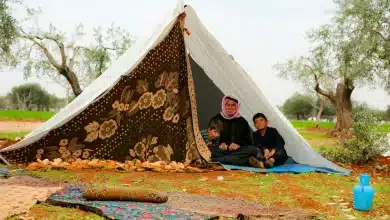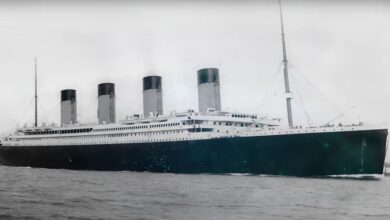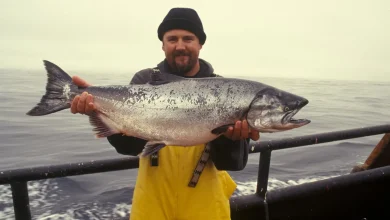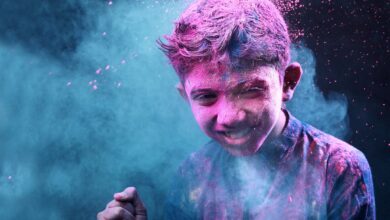The Real Life Superhero
The Science and Geography Behind the Real Life Superhero Movement
Introduction – From Fiction to Function
A curious social phenomenon is emerging in the urban landscape of today: people don capes, armour and aliases, not as cosplayers or entertainers, but to effect real-world changes. These individuals, collectively known as Real Life Superheroes, adopt identities inspired by comic books, films, and TV characters to perform community service, humanitarian work, and neighbourhood security. They may not have superhuman abilities, but their actions are rooted in a desire to make the planet a safer and more just one.
The RLSH movement is not a mere fantasy or fanfare. It provides fertile soil for examining how geography and urban sociology, as well as psychology and civic science, converge to influence grassroots action. We explore, through the lenses of science and human geography, the origins of the Real Life Superhero movement, including motivations, behaviours, societal impacts, and environmental settings.

Chapter 1, Etymology, and Sociolinguistic Development
The term “Real Life Superhero” (often abbreviated as RLSH) is a blending of two worlds – fictional narrative and tangible human behaviour. The compound noun “superhero”, as used in linguistics, dates back to the early 20th Century, primarily through serialised science fiction and comic books.
Although there are variants such as “superhero,” “SuperHero,” and “superheroine, the standardisation “Real Life Superhero”, is gender-neutral. It reflects the inclusiveness of the modern movement. Sociolinguistically, the RLSH moniker embodies a symbolic identity self-ascribed and performative–rooted not in supernatural ability, but in civic action.
The coining of RLSH in the media marks a shift in culture: from passive consumption to active participation and emulation.
Chapter 2 – The Geographies of Superheroism
Real-life superheroes are not just influenced by ideologies, but also by geographical and urban landscapes. They are often centred in densely populated urban areas, where social inequality and heterogeneity intersect with visibility. The geography plays a crucial role in determining where and how RLSH operates.
1. Urban Centres and Opportunity Structures
RLSH has become a major activity in cities like New York City, Seattle, London and Los Angeles. These cities offer:
- Density and high foot traffic increase the chance of interaction with the public.
- Areas of concentrated poverty and homelessness where RLSH may conduct outreach programs
- More anonymity allows participants to maintain alter-egos more efficiently.
Urban environments present unique challenges, from complex jurisdictional laws to surveillance infrastructure. The spatial behaviours of the RLSH- where they patrol, whom they assist, and how they travel- reflect real-world navigation in urban systems.
2. “Heroic Hotspots”, and Vulnerable Zones
RLSH focuses their efforts on certain zones, such as homeless encampments or nightlife districts. They are usually liminal spaces that are not governed by formal institutions and underserved with public resources.
These spaces are referred to by geographers as “zones of exclusion”. This is because the protective apparatus of the state (e.g. law enforcement, health care) is minimal or not accessible. RLSH can fill in service gaps by engaging in harm-reduction or safety patrols.
Chapter 3 – The Psychology of Vigilant Altruism
While the motivations for Real Life Superheroes may be based on psychology or prosocial behaviour, fictional superheroes often are driven by tragedy and cosmic responsibility. Altruism, moral philosophy and personal trauma are all factors that fuel many of these heroes.
1. Altruism Theory and Self-Determination Theory
Psychologists define RLSH as a form of autonomous altruism, where people help others because they are aligned with their internal values and not out of obligation or reward. This is similar to self-determination theory where people seek to satisfy their psychological needs of autonomy, relatedness, and competence.
Adopting a superhero costume and persona does not imply delusion, but rather externalises moral commitment. The superhero persona becomes a tool to reinforce behaviour, a visual reminder for personal ethics and social purpose.
2. Constructing identity through persona
In RLSH, the alter ego is crucial. It allows people to separate their “heroic selves” from their civilian identities. This separation provides emotional and psychological distance when facing difficult or traumatic circumstances (such as dealing with victims of crime or abuse).
Adopting an alias, or dressing up in a costume, has also been shown to boost confidence and reduce anxiety. This phenomenon is sometimes called the “Batman Effect”, where individuals perform better if they imagine themselves as heroic figures.
Chapter 4, Behavioural Patterns, and Civic Engagement
RLSH roles are classified into several civic and scientific domains, including:
1. Humanitarian Outreach
Many RLSH are focused on helping the homeless and vulnerable. The RLSH distributes food, water and hygiene kits. They also offer blankets and medical assistance. They target areas where there are high concentrations of homeless people.
The work of RLSH is similar to that of NGOs and charities. However, RLSH is unique in combining theatrical flair with impact on society.
2. Neighbourhood Patrols and Crime Prevention
Some RLSH patrol city streets at night to prevent minor crimes or help civilians. They may not be law enforcement officers, but they can serve as a deterrent in an emergency or a first responder. These individuals, often equipped with body armour or flashlights and non-lethal weapons, practice what geographers refer to as “tactical cityism”, which is the use of civilian infrastructure to reclaim public space.
Their role in law enforcement is controversial because their actions are on the border of legal grey areas. Many of them coordinate with the local police, or act as citizen observers while staying within legal limits.
3. Civic Education and Awareness Campaigns
Some RLSH are active in spreading awareness of social issues, such as bullying, domestic violence, and climate change. The costumes and public participation are used to amplify educational messages. They often target youth or marginalised groups.
These efforts are part of Public Science Communication, where complex social issues can be distilled down into visual formats that are accessible.
Chapter 5 – The Media, Internet and the Virtual Neighbourhood
The RLSH movement’s rise is closely linked to the evolution in internet culture, and digital geographies of social media.
1. Virtual Communities and Networked Superheroes
Early RLSH communication took place through niche message boards and forums. Platforms like Reddit and Facebook, Instagram and TikTok are hubs today for:
- Share patrol footage and outreach update.
- Coordination of joint missions and meetings.
- Safety tips and peer support.
This digital layer allows people from different cultures and geographies to create a global decentralised movement. Online collaboration and viral storytelling can scale what was once an isolated effort.

2. Critique and “Ninjalantism
Critics claim that some RLSH are more focused on self-promotion rather than impact. The term “ninjalantes”, a combination of “ninja”, “vigilante”, and “criminal”, is used to denigrate individuals who romanticise crime-fighting but lack adequate training or strategies.
Some see this as an example of digital performance where public actions can be curated to get likes and shares. Visibility can increase awareness, but it can also erode sincerity and attract legal scrutiny.
Chapter 6 – Influences of Fiction and Reality
The RLSH phenomenon is inherently intertextual–drawing from both media representation and real-world ethics.
1. Comic Books and Non-Powered Models
Most RLSH are not interested in super-powered heroes like Superman. Instead, they emulate non-powered vigilantes, such as Batman or Iron Man. These figures represent the idea that human discipline and intellect, as well as willpower, can be used to serve justice, without using magic or mutation.
This type of media literacy, which involves the application of fictional models in real life, also serves as a story coping mechanism to cope with trauma, grief or disillusionment.
2. Cinematic Impact
In 2005-2012, the release of Christopher Nolan’s Dark Knight Trilogy and kick-ass (2010) sparked renewed interest in RLSH. Some saw these films glamorising vigilante injustice, while others saw them as catalysts of civic identity and agency.
Despite media criticisms of “wannabe behaviour,” many RLSH have a sense of self. They accept the fiction, but use it to guide constructive action and not as delusion.
Conclusion – Heroes without Powers and Cities with Hope
The Real Life Superhero Movement is an exciting intersection of science and geography, psychology and civic engagement. These individuals are ordinary in biology but extraordinary in resolve, use costume and commitment to confront society’s fractures.
Their work is not about stopping bullets or jumping tall buildings.
- What are the responsibilities of individuals to their community?
- Can fiction inspire real change?
- What can urban design and social
policy support grassroots heroism?
RLSH offers a deeply humane response in a world that is often characterised by social systems that fail those who are most vulnerable. Their methods may be questioned and they may have flaws, but the impulse to help, act, and care is a deeply human and scientific one.
Cities shine brighter in their shadows.




